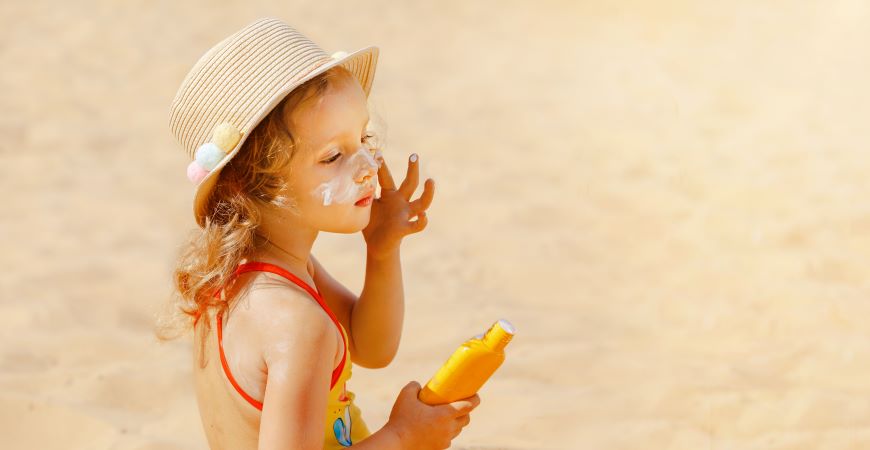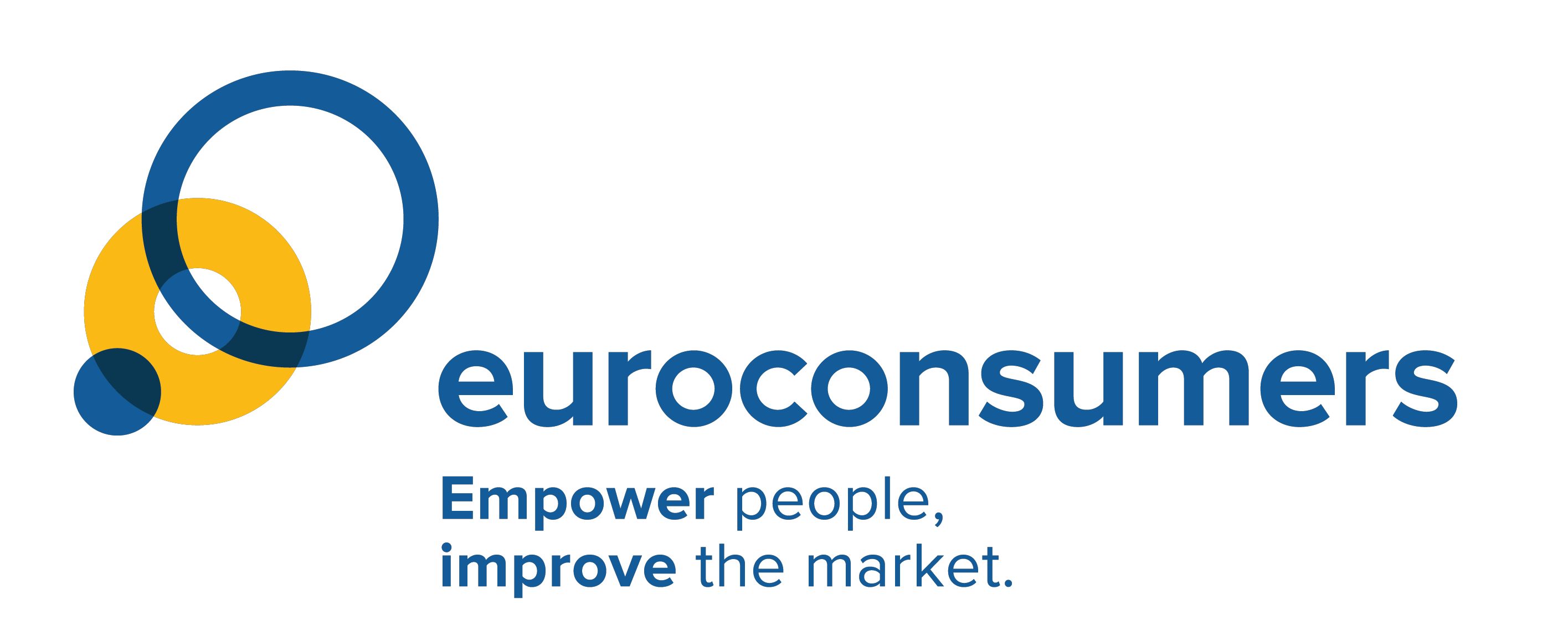The quest for eco-friendly sunscreen

First ever sunscreen awarded Test-Achats’ prestigious Eco + Efficiency label, as Euroconsumers joins the Surfrider Foundation’s conference ‘Behind UV Filters’ to discuss the impact of sunscreen on our health and oceans.
Summer’s fine weather brings us outdoors to lounge in the sun, swim in the sea or perhaps work in outdoor jobs. Protection from the sun’s damaging UVA and UVB rays is really important and consumers need the right information to have confidence they are choosing the best product to protect them.
As part of its regular product testing. Euroconsumers’ member Test Achats/Test Aankoop has released the results of its annual test on sunscreens for quality, performance and environmental impact.
Although there were disappointing results from some recognized brands who continued to fail the SPF (UVB) and UVA, Test Achats have been thrilled this year to have awarded a sunscreen its well regarded Eco + Efficiency label, proving that eco- friendly, effective sun protection is possible.
Testing sunscreen for quality and sustainability
Each year the labs add more brands and more exacting criteria to the test to help consumers make optimal decisions. Of course a sunscreen first and foremost needs to be safe and effectively protect consumers. However consumers are also eager to play a part in the green transition, find sustainable alternatives and help reduce the devastating effects on marine life. Getting accurate information out to consumers on the products that are most sustainable is therefore crucial.
How is sunscreen tested?
Euroconsumsers’ sunscreen tests have several components:
- Filter test: tests are run in a certified laboratory to check if sufficient protection against UVA and UVB is offered. Do the sunscreen filters meet current EU regulations and recommendations?
- Ingredient check: are there any allergens, endocrine disruptors and other damaging substances?
- Panel test: checking qualities like ease of application, absorbency, texture, greasiness, stickiness, smell and whether or not the skin changed colour.
- Packaging check: does it list correct ingredients and contact details, does it conform to EU standards?
- Claims: are they misleading? Is the SPF printed on the product actually met?
Next comes the eco-test which gives an eco-score based on:
- Filter damage assessment: chemical filters may have the worst reputation, contributing to coral reef damage, yet ‘natural’ mineral filters such as titanium dioxide for example, aren’t completely innocent either and can prevent growth to plankton. All filters, and other substances like parabens, are assessed on their toxicity, biodegradability, impact on coral reefs, accumulation within the natural environment and endocrine disruption.
- Microplastic check: all products are checked against the ‘Beat the Microbeads’ test for harmful microplastics.
- Wastage: from the packaging material itself and the surplus packaging, to the amount of product left in the bottle. More streamlined packaging helps reduce potential waste (the ecolabel states no more than 9% wastage) and encourages lighter transportation.
Summer 2022 one strong eco-performance but other basic problems persist
The good news is that most sunscreens deliver their promised protection. Of 55 tested products, 47 performed well – not necessarily the most expensive. The bad news is that each year some sunscreens underperform significantly, promising more SPF than they deliver – including those targeted at children. 2022 is no different.
This year, among the initial five products that failed to deliver what they promise, the Zwitsal brand pops up. This is particularly disturbing as it is aimed at protecting vulnerable babies and young children. And especially since it has now failed tests for the second year in a row. Also last year two Zwitsal products were reported to be unsafe. But despite complaints to Public Health Belgium back then, these two are still available on the market today.
Last week, Test Achats filed three additional complaints, this time against three new Biosolis sunscreen products. But this time the Belgian authorities announced they would already quarantine these products in anticipation of proof of the contrary provided by Biosolis.
The lack of enforcement action has been a persistent pain point since testing began. In 2019, complaints from Euroconsumers’ four different national consumer organizations early May about one particular sunscreen failing to provide the right protection, only resulted in a withdrawal from sale facilitated by the Spanish authorities in the autumn, after what can easily be described as a 5 month long Kafkaian process.
One challenge is that public authorities do not carry out retesting themselves. They ask the companies to provide proof from their own retests. If the companies’ result is ok, then the product can stay on the market, even if an independent consumer testing organizations has a different result. As consumer organizations, we would like to see the government itself retesting products in a laboratory in accordance with ISO standards.
Euroconsumers brought this issue to the European Commission in 2020. This ultimately led to some specifications with regard to the ISO standard that manufacturers relied on for their product testing, aimed to put an end to the wide variances allowed in results.
Sustainability of sunscreen
In terms of sustainability, whilst most sunscreens delivered promised protection, tests show that environmental impact clearly needs to improve. The vast majority use non-eco friendly sun filters, and most contain environmentally challenging ingredients like microplastics, allergens and EDTA. Non-recycled plastic and excessive packaging are also common.
Breakthrough in sustainability and quality
This year quality and sustainability in one product has been achieved. For the first time the “Eco and Efficient” label has been awarded for sunscreens scoring well on environmental criteria AND performance.
The product that ticked all the boxes was NAIF SPF 30 which uses a zinc oxide mineral filter, eco-friendly packaging and no microplastics. It came very close to the best in the sunscreen protection test, proving environment respecting, high-performing sunscreens are possible.
Consumer power is eco and efficient
Consumer organizations and consumers can use their critical mass to steer the market towards sustainability. Access to accurate, trustworthy information must be available alongside knowledge that a product claiming to be green is indeed green.
Eco-respecting, quality sunscreens need to be accessible and affordable. Without enough sustainable alternatives there is no real consumer choice.
Here we have the opportunity to call on the sunscreen industry to invest in developing quality, eco-friendly sunscreen products. Combining the capabilities of forward-looking market players with consumers’ needs for more sustainable sunscreens can accelerate our response to this pressing challenge. We stand ready to team up with responsible stakeholders who understand that cooperation is essential for a sustainable future for consumers and businesses.
The first ever ‘Eco & Efficiency’ label for sunscreen proves that eco friendly, effective sunscreen is possible. We can work together to make sure that next summer, this is the norm and not the exception.
Euroconsumers joins Surfrider Europe conference
This week, Euroconsumers joined the Surfrider Foundation Europe conference, which brought together industry, academics, marine biologists and consumer organizations to explore the options for eco-friendly sunscreen. There isn’t yet a single miracle solution, but stakeholders were optimistic and willing to establish new products to protect the oceans as soon as they can.
You can watch the proceedings here.

